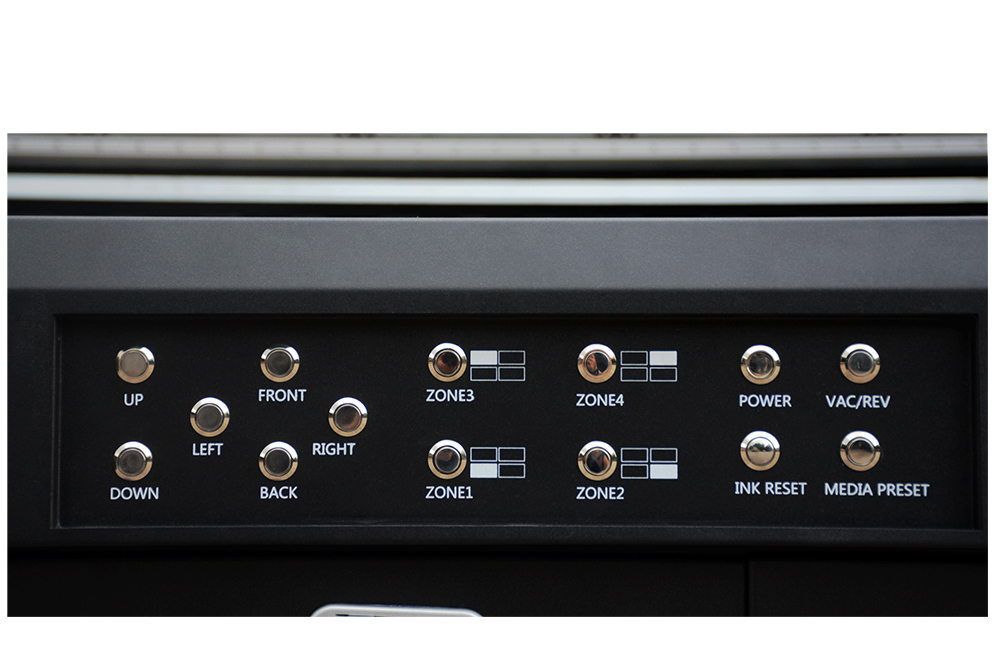UV Flatbed Printer: A Guide to Troubleshooting Common Issues
UV Flatbed Printer: A Guide to Troubleshooting Common Issues
In the realm of modern printing technology, UV flatbed printers have emerged as versatile and efficient tools for producing high-quality prints on a wide array of substrates. These printers utilize ultraviolet (UV) light to cure inks instantly, resulting in durable and vibrant images. However, like any sophisticated machinery, UV flatbed printers can encounter various issues that may disrupt the printing process and compromise output quality. This comprehensive guide aims to provide users with a systematic approach to troubleshooting common problems encountered with UV flatbed printers, enabling them to maintain optimal printer performance and minimize downtime.

1. Understanding the Basics of UV Flatbed Printers
Before diving into troubleshooting, it’s crucial to grasp the fundamental components and operating principles of UV flatbed printers. These printers typically consist of:
Print Head: Contains nozzles that dispense UV-curable ink onto the substrate.
UV Lamps/LEDs: Emit UV light to cure the ink immediately after deposition.
Substrate Platform: Holds the material being printed, which can range from rigid boards to flexible media.
Ink Supply System: Manages the flow of ink to the print head.
Control System: Oversees the entire printing process, including inkjet firing, platform movement, and UV curing.
2. Common Issues and Troubleshooting Steps
2.1. Poor Print Quality
Issue: Prints appear blurry, faded, or have uneven ink coverage.
Troubleshooting Steps:
Check Nozzle Alignment: Ensure the print head nozzles are properly aligned. Misalignment can cause ink to be deposited inaccurately.
Clean Print Head: Over time, ink residue and dust can accumulate on the print head, affecting performance. Use a soft, lint-free cloth and approved cleaning solution to clean the nozzles gently.
Adjust Ink Viscosity: Incorrect ink viscosity can lead to poor print quality. Consult the printer’s manual for the recommended viscosity range and adjust as needed.
Calibrate the Printer: Regular calibration ensures that the printer’s settings match the actual printing conditions. Follow the manufacturer’s instructions for calibration.
2.2. Ink Curing Problems
Issue: Ink fails to cure properly, resulting in tacky or smudged prints.
Troubleshooting Steps:
Inspect UV Lamps/LEDs: Ensure all UV lamps or LEDs are functioning correctly. Replace any faulty units promptly.
Verify Cure Settings: Incorrect cure time or intensity can prevent proper ink curing. Refer to the printer’s manual for the appropriate settings based on the ink type and substrate.
Maintain Adequate Distance: The distance between the UV lamps and the substrate should be as per the manufacturer’s specifications. Adjust if necessary.
Check Ink Compatibility: Use UV-curable inks specifically designed for your printer model. Incompatible inks may not cure properly.
2.3. Print Head Clogging
Issue: Nozzles become clogged, leading to missing or streaky prints.
Troubleshooting Steps:
Perform Nozzle Check: Run a nozzle check pattern to identify clogged nozzles.
Execute Cleaning Cycles: Most printers have built-in cleaning cycles that can help clear clogged nozzles. Run these cycles as per the printer’s instructions.
Use Cleaning Solution: If automatic cleaning fails, manually clean the print head with a suitable cleaning solution and a soft brush.
Replace Print Head: If cleaning efforts are unsuccessful, the print head may need replacement.
2.4. Substrate Adhesion Issues
Issue: Ink does not adhere properly to the substrate, causing peeling or flaking.
Troubleshooting Steps:
Choose Compatible Substrates: Ensure the substrate is compatible with the UV ink being used. Some materials require specific pretreatment or primers for proper adhesion.
Adjust Ink Adhesion Settings: Modify printer settings, such as ink laydown and cure parameters, to enhance adhesion.
Test Different Substrates: If possible, conduct tests on different substrates to find the best match for your ink and print job requirements.
2.5. Software and Connectivity Issues
Issue: Printer fails to respond to commands or experiences software glitches.
Troubleshooting Steps:
Restart Printer and Computer: Sometimes, a simple restart can resolve software conflicts or temporary malfunctions.
Update Driver and Software: Ensure the printer driver and any associated software are up to date. Manufacturers often release updates to address bugs and improve performance.
Check Connections: Verify that all cables, including USB and network connections, are secure and functioning properly.
Reset Printer to Factory Settings: If problems persist, resetting the printer to its factory settings can help eliminate configuration issues.
2.6. Mechanical Problems
Issue: Printer experiences mechanical failures, such as jammed platforms or motor malfunctions.
Troubleshooting Steps:
Inspect Moving Parts: Check for any debris or obstacles that may be jamming the substrate platform or other moving components.
Lubricate Mechanisms: Apply recommended lubricants to moving parts to ensure smooth operation.
Tighten Loose Screws and Belts: Regularly inspect and tighten any loose screws, belts, or other fasteners that could affect printer performance.
Contact Technical Support: For complex mechanical issues, it’s best to consult the printer’s technical support team or a qualified service technician.
3. Preventive Maintenance Tips
To minimize the occurrence of these issues, regular preventive maintenance is essential. Here are some tips:
Daily Cleaning: Perform daily cleaning of the print head and substrate platform to remove dust and ink residue.
Scheduled Maintenance: Follow the printer’s maintenance schedule for tasks such as replacing filters, cleaning ink lines, and inspecting mechanical components.
Proper Ink Storage: Store UV-curable inks in a cool, dark place to prevent degradation.
Operator Training: Ensure that operators are trained on proper printer usage and troubleshooting procedures.
Backup Systems: Maintain backups of important print files and software to prevent data loss in case of a malfunction.
4. Conclusion
UV flatbed printers are powerful tools that can significantly enhance the quality and versatility of your printing operations. However, like any complex machinery, they are prone to various issues that can disrupt workflow and compromise print quality. By following the systematic troubleshooting steps outlined in this guide, along with implementing preventive maintenance practices, you can keep your UV flatbed printer running smoothly and efficiently. Remember, when in doubt or faced with complex problems, don’t hesitate to reach out to professional technical support for assistance. With proper care and attention, your UV flatbed printer can continue to deliver exceptional results for years to come.
